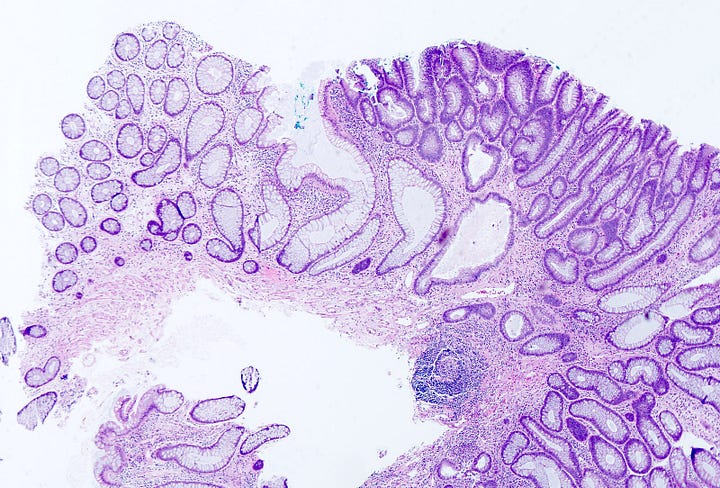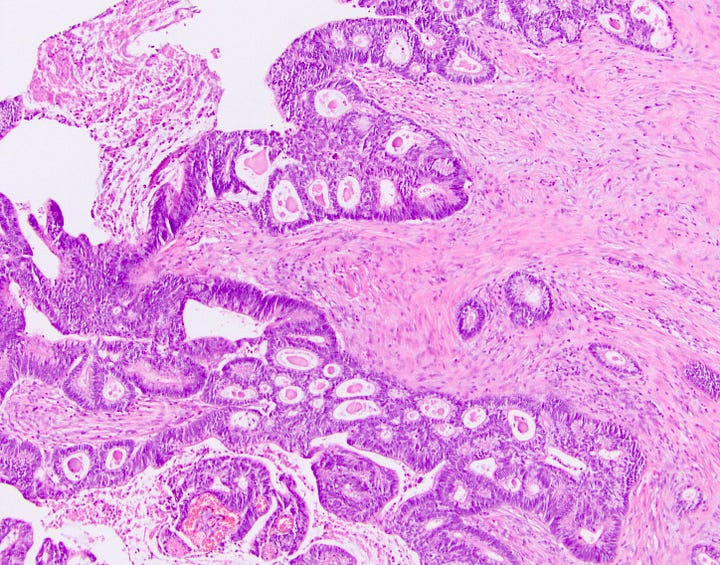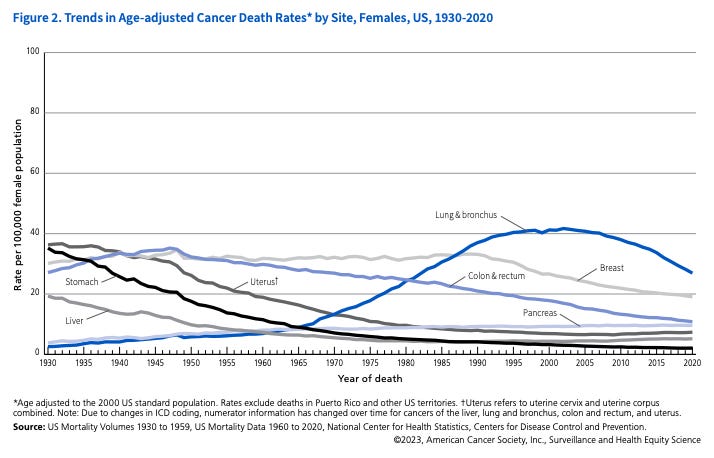In 2023, the American Cancer Society estimated that cancer would kill 609,820 Americans, the #2 cause of US deaths. Although age adjusted cancer death rates have declined (see graphs above), we still don’t understand cancer well enough to have more effective treatments and we have not implemented an effective nationwide strategy to substantially reduce cancer deaths (click here for my strategic plan).
We also need to better understand cancer precursor lesions. Cells don’t transition from normal to malignant in one step. Instead, they slowly acquire changes that are often unnoticeable, then have rapid bursts of activity to become cancer precursors or premalignant. However, most malignancies currently have no known precursor.


I am compiling a database of all malignant lesions and their precursor lesions to better understand how cancer arises. I am inviting the worldwide pathology and scientific community to review and update this list by emailing me at Nat@PathologyOutlines.com. The current version is at https://docs.google.com/spreadsheets/d/14cosItHiVoH8EahECAs_Hua3BYBPxxaIDTXs9kunkQo/edit.
This is my personal project and is not overseen by the PathologyOutlines.com Editorial Board.
I am including all human tissue based diagnoses that routinely have malignant, in situ (CIS), borderline, intermediate malignant or atypical properties. I am not including lesions that only occasionally have malignant properties but am willing to reconsider specific determinations. I am excluding soft tissue, bone, hematopoietic, metastatic or other lesions outside of their usual sites unless they are distinctive there. We are considering adding molecular based diagnoses as a precursor even if there is no distinct histology, based on a review of bone marrow and CNS malignancies.
Specifically, I am interested in studying:
The molecular patterns of known cancer precursors to help us identify precursors for specific cancers that are not yet known.
The reasons why known precursors are identifiable histologically; i.e. what patterns of molecular expression produce notable cellular changes. This may help us recognize precursors histologically with subtle cellular changes.
Do normal appearing cells adjacent to a malignancy with no known precursor have the same molecular characteristics as the malignancy, and if so, does this represent a precursor? Let me know what you think.
How many distinct types of malignancies are there? To my knowledge, this information is not currently available. My current estimate is 1,800 diagnoses distinct types based on the list to date (~ 450 entities, the list is 25% done).
This is a work in progress. I plan to update this list to include all human malignancies by April 2024 and as needed based on comments to Nat@PathologyOutlines.com .
Types of human malignancies and their precursor lesions
Cancer precursor lesions essay
If you like these essays, please share them with others.
Follow me on Substack or LinkedIn or through our Curing Cancer Newsletter.
Follow our Curing Cancer Network on LinkedIn and Twitter. Each week we post interesting cancer related images of malignancies with diagnoses.
Latest versions of our cancer related documents:
American Code Against Cancer (how you can prevent cancer)
Email me at Nat@PathologyOutlines.com - Unfortunately, I cannot provide medical advice.
I also publish Notes at https://substack.com/note. Subscribers will automatically see my notes.
Other social media - Threads and Instagram: npernickmich, Tribel: @nat385440b





